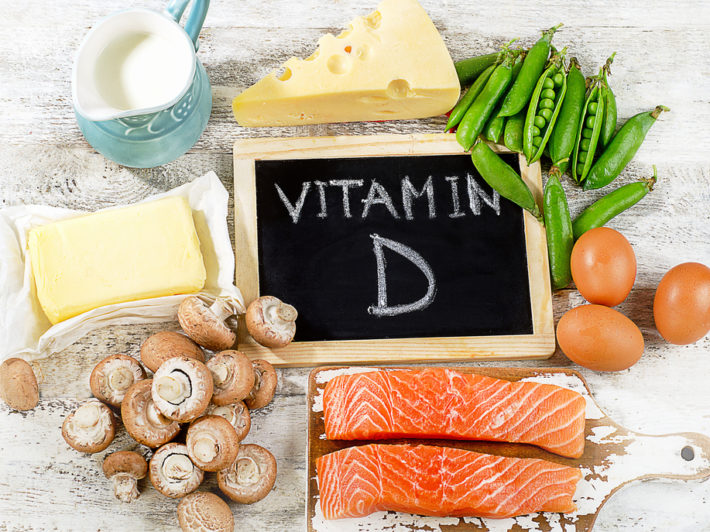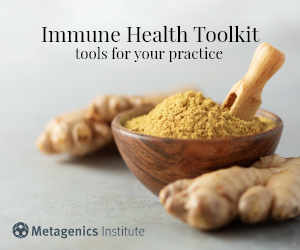
by Ashley Jordan Ferira, PhD, RDN
Overview
Vitamin D research and daily news headlines are ubiquitous. PubMed’s search engine contains over 81,800 articles pertaining to vitamin D.1 Information abounds on vitamin D, but the vetting and translation of that information into pragmatic recommendations is harder to find. Evidence-based takeaways and female-centric recommendations are crucial for healthcare practitioners (HCPs), their female patients and consumers alike. Women are busy, multi-tasking pros, so practical, personalized takeaways are always appreciated. In other words, women need the “411” on vitamin D. Merriam-Webster defines “411” as “relevant information” or the “skinny”.2 So for all of you busy women, here’s the skinny on vitamin D. Let’s explore common questions about this popular micronutrient.
Q: Is vitamin D more important for younger or older women?
A: All of the above. Vitamin D plays a critical role in women’s health across all life stages, from fertility/conception, to in utero, childhood, adolescence, adulthood, older adulthood, and even in palliative care. Vitamin D is converted by the liver and kidneys into its active hormone form: 1,25-dihydroxyvitamin D. This dynamic hormone binds nuclear receptors in many different organs in order to modulate gene expression related to many crucial health areas across the lifecycle, including bone, muscle, immune, cardiometabolic, brain, and pregnancy to name a few.3
Q: I am a grandmother. Are my vitamin D needs different than my daughter and granddaughter?
A: Yes, age-specific vitamin D recommendations exist. As an essential fat-soluble vitamin, women need to achieve adequate levels of vitamin D daily. Age-specific Recommended Dietary Allowances (RDA) from The Institute of Medicine (IOM),4 as well as newer clinical guidelines from The Endocrine Society,5 provide helpful clinical direction for daily vitamin D intake and/or supplementation goals.
The IOM RDAs4 are considered by many vitamin D researchers to be a conservative, minimum daily vitamin D intake estimate to support the bone health of a healthy population (i.e. prevent the manifestation of frank vitamin D deficiency as bone softening: rickets and osteomalacia):
Infants (0-1 year): 400 IU/day
Children & Adolescents (1-18 years): 600 IU/day
Adults (19-70 years): 600 IU/day
Older Adults (>70 years): 800 IU/day
The Endocrine Society’s clinical practice guidelines5 recommend higher daily vitamin D levels than the IOM, with a different end-goal: raising the serum biomarker for vitamin D status [serum 25-hydroxvitamin D: 25(OH)D] into the sufficient range (≥ 30 ng/ml) in the individual patient:
Infants (0-1 year): At least 1,000 IU/day
Children & Adolescents (1-18 years): At least 1,000 IU/day
Adults (19+ years): At least 1,500 – 2,000 IU/day
Q: I am a health-conscious woman who eats a nutritious, well-rounded diet. I should not need a vitamin D supplement, right?
A: Not so fast. Daily micronutrient needs can be met via diet alone for many vitamins and minerals. Vitamin D is one of the exceptions, which is why an alarming number of Americans (93%) are failing to consume the recommended levels from their diet alone.6-7 Very few foods are endogenous sources of animal-derived vitamin D3 (cholecalciferol) or plant-derived vitamin D2 (ergocalciferol). Some natural vitamin D sources include certain fatty fish (e.g. salmon, mackerel, sardines, cod, halibut, and tuna), fish liver oils, eggs (yolk) and certain species of UV-irradiated mushrooms.8 In the early 20th century, the US began fortifying dairy and cereals with vitamin D to help combat rickets, which was widespread. For example, one cup (8 fluid ounces) of fortified milk will contain approximately 100 IU of vitamin D.
Even though some food sources do exist, the amounts of these foods or beverages that an adult would need to consume daily in order to achieve healthy 25(OH)D levels (> 30 ng/ml) is quite unrealistic and even comical to consider. For example, you would need to toss back 20 glasses of milk daily or 50 eggs/day to achieve 2,000 IU of vitamin D! In contrast, daily vitamin D supplementation provides an easy and economical solution to consistently achieve 2,000 IU and any other specifically targeted levels.
Q: I enjoy the outdoors and get out in the sun daily, so I should be getting all of the vitamin D that I need, correct?
A: Vitamin D is a highly unique micronutrient due to its ability to be synthesized by our skin following sufficient ultraviolet (UV) B irradiation from the sun. Many factors can result in variable UV radiation exposure, including season, latitude, time of day, length of day, cloud cover, smog, skin’s melanin content, and sunscreen use. Furthermore, medical consensus advises limiting sun exposure due to its established carcinogenic effects. Interestingly, even when dietary and sun exposure are both considered, conservative estimates approximate that 1/3 of the US population still remains vitamin D insufficient or deficient.9
Q: What factors can increase my risk for being vitamin D deficient? Are there female-specific risk factors?
A: Although the cutoff levels for vitamin D sufficiency vs. deficiency are still debated amongst vitamin D researchers and clinicians, insufficiency is considered a 25(OH)D of 21-29 ng/ml, while deficiency is < 20 ng/ml.5 Therefore, hypovitaminosis D (insufficiency and deficiency, collectively) occurs when a patient’s serum 25(OH)D falls below 30 ng/ml. The goal is 30 ng/ml or higher.
Ideally, vitamin D intake recommendations4-5 and therapy are personalized by the HCP based on patient-specific information, such as baseline vitamin D status, vitamin D receptor single nucleotide polymorphisms and other pertinent risk factors.
Common risk factors for vitamin D deficiency to look out for include:
-> Overweight/obesity
-> Older age
-> Regular sunscreen use
-> Winter season
-> Frequent TV viewing
-> Dairy product exclusion
-> Darker skin (more melanin)
-> Not using vitamin D supplements
-> Malabsorption disorders (e.g. bariatric surgery, IBD, cystic fibrosis)
-> Liver disease
-> Renal insufficiency
-> Certain drug classes: weight loss, fat substitutes, bile sequestrants, anti-convulsants, anti-retrovirals, anti-tuberculosis, anti-fungals, glucocorticoids
-> Lastly, additional female-specific risk factors to look out for include exclusive breastfeeding while mother is vitamin D insufficient (can result in infant being vitamin D deficient) and certain cultural clothing that covers significant amounts of skin surface area (e.g. hijab, niqab).
Key Takeaways
- Vitamin D has gained popularity in the public due to the numerous research studies and news headlines; misinformation exists and practical recommendations are lacking
- Healthcare practitioners must be the trusted experts to translate the existing body of literature with an evidence-based and personalized approach for their patients
- Women comprise 49.6% of the world population,10 so the potential deleterious personal and public health ramifications of vitamin D deficiency are enormous
- Vitamin D plays critical skeletal and extraskeletal health support roles throughout a woman’s life. HCPs should inform patients of their age-specific vitamin D needs and how to meet them
- Vitamin D inputs from dietary and UV sources are likely insufficient to meet a woman’s daily vitamin D need consistently over time
- Vitamin D supplementation is prudent and evidence-based
- Risk factors for hypovitaminosis D are important to screen for when considering the patient’s need for a vitamin D lab test (e.g. serum 25-hydroxyvitamin D)
Citations
- Pubmed.gov. Vitamin D. https://www.ncbi.nlm.nih.gov/pubmed/?term=vitamin+D. Accessed August 19, 2019.
- Merriam-Webster. 411. https://www.merriam-webster.com/dictionary/411. Accessed October 6, 2017.
- Hossein-nezhad A et al. Vitamin D for health: a global perspective. Mayo Clin Proc. 201;88(7):720-755.
- Institute of Medicine. Food and Nutrition Board. Dietary Reference Intakes for Calcium and Vitamin D. National Academy Press. Washington, D.C. 2010.
- Holick MF et al. Evaluation, treatment, and prevention of vitamin D deficiency: an Endocrine Society Clinical Practice Guideline. J Clin Endocrinol Metab. 2011;96(7):1911-1930.
- Bailey RL et al. Estimation of total usual calcium and vitamin D intakes in the United States. J Nutr. 2010;140:817-822.
- Fulgoni VL et al. Foods, fortificants, and supplements: where do Americans get their nutrients? J Nutr. 2011;141:1847-1854.
- Bendik I et al. Vitamin D: a critical and essential micronutrient for human health. Front Physiol. 2014;5:248.
- Looker AC et al. Vitamin D status: United States, 2001-2006. NCHS Data Brief. 2011(59):1-8.
- Countrymeters. World population. http://countrymeters.info/en/World. Accessed October 6, 2017.
Ashley Jordan Ferira, PhD, RDN completed her bachelor’s degree at the University of Pennsylvania and PhD in Foods & Nutrition at The University of Georgia, where she researched the role of vitamin D in pediatric cardiometabolic disease risk. Dr. Ferira is a Registered Dietitian Nutritionist (RDN) and has served in leadership roles across local and statewide dietetics, academic, industry, and nonprofit sectors.






